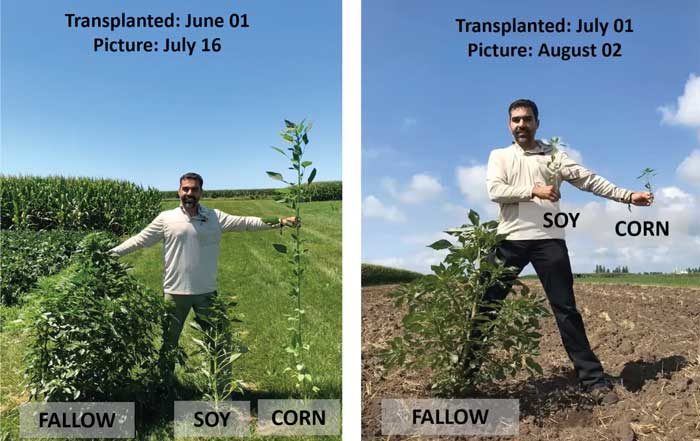No-Till Farmer
Get full access NOW to the most comprehensive, powerful and easy-to-use online resource for no-tillage practices. Just one good idea will pay for your subscription hundreds of times over.

WEED SUPPRESSION. In this study, Palmer amaranth grown in fallow fields was significantly bigger than weeds in fields with corn and soybeans. The row crops delayed weed emergence by about a month.
Herbicide resistance continues to be a growing concern among no-tillers. Not only are more weeds developing resistance, but some herbicide-resistant weeds, such as Palmer amaranth and waterhemp, are also very difficult to control if not caught early
Readily available broad-spectrum herbicides helped many producers make the switch to no-till from conventional tillage in the 1990s. But as herbicide resistance began appearing in the 2000s, it started affecting some farmers’ ability to no-till and led them back to tillage to control weeds.
“Producers need conservation tools like no-till, but they also need to manage weeds,” says Chris Proctor, weed scientist at the University of Nebraska. “To effectively control herbicide-resistant weeds, producers are going to have to implement multiple integrated pest management (IPM) tools, including mechanical and cultural strategies, into their IPM programs.”
Twenty years after the first cases of herbicide resistance, more weeds continue to develop resistance. Some are developing resistance to multiple classes of herbicides.
“When weeds start stacking resistances, they become even more difficult to control,” Proctor says. “I think herbicides are an effective tool for controlling weeds, but we need to have tools in addition to herbicides in our toolbox.”
Palmer amaranth and water hemp are two aggressive pigweeds that are sometimes referred to as “super weeds.” These weeds can overtake no-tillers’ fields if left unchecked. Both can produce thousands of seeds from a single plant.
Palmer amaranth can grow as much as 3 inches in a day, which is problematic as most effective control is seen while…